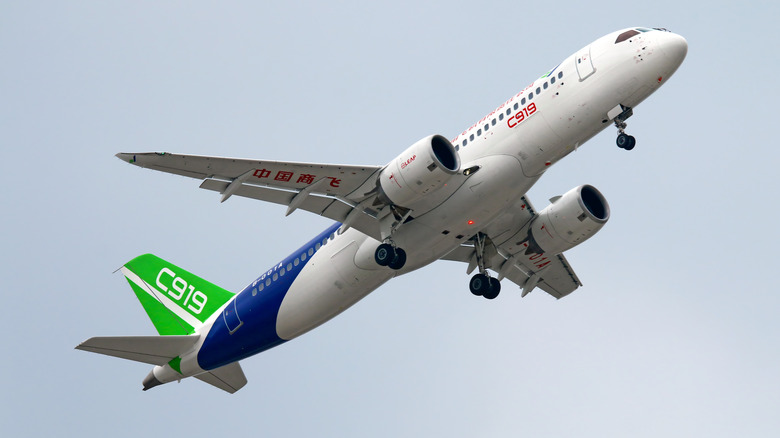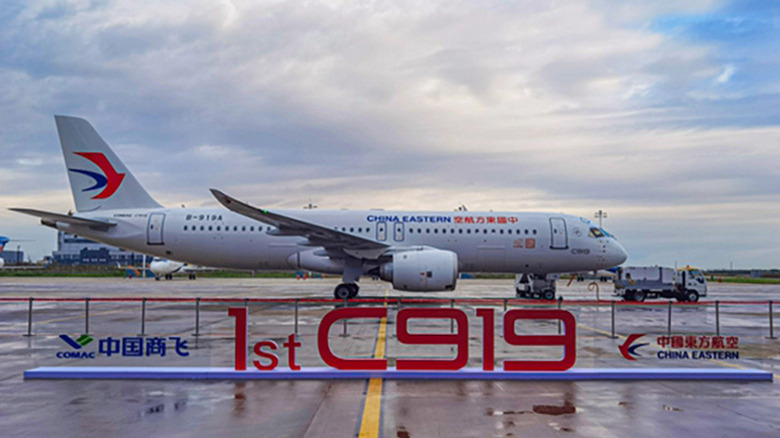All About China's Comac C919 Jet
Since China went through a major overhaul of its market system in the late 1970s, the emergence of capitalism has turned the world's most populous nation into a global economic powerhouse. According to Safeguard Global, China currently manufactures more than 1/4 of the world's goods, accounting for almost $4 trillion in revenue in 2019. China has become a major player in the electric vehicle sector, producing batteries for automakers worldwide and accounting for more than half of the world's EV sales. Late last year, China's BYD surpassed Tesla as the world's largest producer of EVs, and Chinese EV juggernaut Zeekr is teaming with Waymo to build a self-driving taxi that could soon be headed to the United States.
Transportation sector innovation in China hasn't been kept on the ground. Comac, or the Commercial Aircraft Corporation of China, developed the nation's first internationally viable commercial airliner, the C919, in 2015. Its first test flight took place in 2017. The first C919s were delivered to China Eastern Airlines in December of 2022, and that plane took its first passenger flight last May. China East Airlines flight MU9191 went from Shanghai to Beijing with 128 passengers aboard.
Many of the C919's parts are made outside China
The C919 has a range of 4,075 to 5,555 kilometers (about 2,500 to 3,450 miles) and seats between 158 and 192 passengers in its single-aisle cabin. The fuselage is 38.9 meters (127.6 feet) long, and the C919's wingspan is 35.8 meters (117.5 feet). The tip of the tail stands 11.95 meters(39.2 feet) from the ground, and the cabin height is 2.25 meters (7.4 feet).
Many of the C919's components are made outside China, including the wing-mounted CFMI LEAP 1- engines. Most of the aluminum alloy fuselage and wing panels are made in Xi'an and Jiangxi and assembled in Shanghai. The fly-by-wire system, hydraulics, and auxiliary power and fire protection systems are mostly made in the USA by Parker, Honeywell, MOOG, and Kidde, although the Aviation Industry Corporation of China, or AVIC, contributes to those systems as well. Swiss industrial machinery giant Liebherr makes the C919's landing gear and air conditioning system, the latter of which can be controlled by passengers on a seat-by-seat basis.
The active C919 fleet is currently limited to the four planes operated by China Eastern; the C919 is not yet certified to fly elsewhere. If Comac can clear regulatory hurdles and avoid supply chain disruptions, the C919 could someday put a dent in the market for older passenger aircraft. Industry consultant Mike Yeomans told Reuters, "With Airbus and Boeing narrowbodies sold out for most of this decade, the C919 has a strong opportunity to gain market share, particularly in its domestic market."

